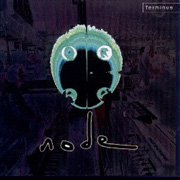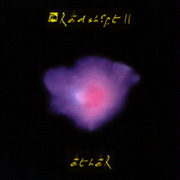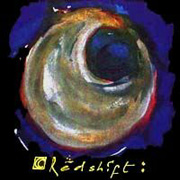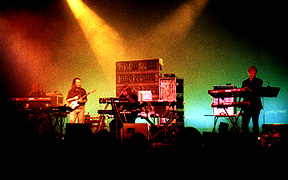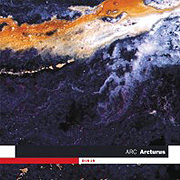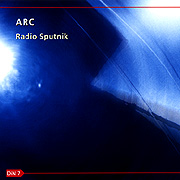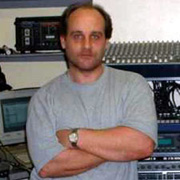| Significant Works of the Berlin-School - Contemporary Releases | ||||||||||||
 |
While the few albums that founded the Spacemusic genre 30 years ago have been cited as a
major influence by a number of electronic musicians, very few of the albums that followed have actually captured the mysterious minimalism of the era. By today's technological standards, these albums might be considered crude, but there is an elegance to them - an enduring
quality difficult to quantify.
|
| 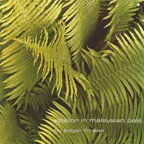 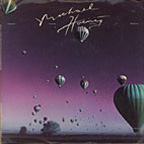 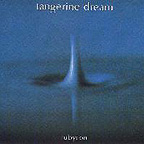 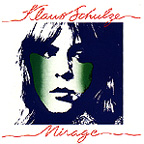 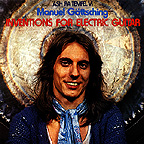
Among the core albums of this genre were Rubycon and Phaedra by Tangerine Dream, Picture Music and Mirage by Klaus Schulze and Inventions for Electric Guitar and New Age of Earth by Ash Ra Tempel. Released in the 1970s, all were considered to be ahead of their time. Now, over 30 years on, we find that contemporary music has still not caught up, nor will it ever it seems. These works were realized at a unique point in history. In part a reaction to new music technology by way of the recent availability of the electronic music synthesizer as well as by an emerging cosmic-based spirituality, early Spacemusic intertwined the pure exploration of sound and electronic textures with an influence of cosmic yearning and a claustrophobic political climate. Yet, it was the more aesthetic based elements of the day that molded Spacemusic into a musical form. Music from Karlheinz Stockhausen and his groundbreaking electronic work Hymnen as tempered by the psychedelic improvisations of rock groups like the Grateful Dead and Pink Floyd as well as epic sized classical compositions by the venerable Richard Wagner informed this movement with a sense of scale. The result of these cultural and technological influences is a timeless and unique music characterized by a mysterious mood and evocative atmosphere. In the time following the initial Spacemusic era, many artists have been inspired to realize their own music. Several releases have approached the integrity of the original materworks:
Node The group Node is made up of Dave Bessell, Gary Stout, Ed Buller, and Flood. Their approach to Spacemusic is by way of live improvisation and the inspired interaction between the vintage gear and each other. The group has played out live at events like the EMMA Festival in 1995 as well as at Paddington Station in London, which resulted in the release of the EP Terminus. Even their full-length self-titled CD was recorded live to two-track. While Node's music does include engaging melodies and rhythms, their work more explores texture and sonic experimentation. Access an insightful article about Node from Sound on Sound Magazine October 1999: Zero Crossing Redshift Redshift (James Goddard, Rob Jenkins, Julian Shreeve and Mark Shreeve) fights the notion that Spacemusic belongs to history. Their works are more than a continuation of a lost tradition and with each release and live concert prove that Spacemusic is a mode of art that is inexhaustible. Redshift's studio and live CDs offer strong melodic content, matched by extraordinary ever-evolving sequencer cycling. Tight analogue tones dance up and down the octave, in and out of synchronization with a throbbing bass rhythm and create seemingly endless permutations of pulse and flow. Above the torrent floats misty consonant choirs cut by reed thin themes traversing the scales. While the group uses the sounds and style that emerged out of the Berlin scene of 1970s Germany, their mission goes beyond mere mimicry and the group produces music which explores the center of the Spacemusic genre as deeply as does the boundaries. For more on Redshift, access: http://www.redshift.biz Arc Mark Shreeve and Ian Boddy have a great deal in common. They both independently rose to icon status - catalyzing the 1980's UK synth scene - through the release of several remarkable studio albums and numerous legendary live performances; Shreeve for muscular, testosterone fueled synth music and Boddy for prog-influenced symphonic synthscapes. This duo also shares a certain duality to their character as both are "professional" musicians by occupation and Electronic Musicians by avocation - both struggling with demands and deadlines placed on them through scoring films, authoring library discs or other commercial work, against the drive to create their own, more personally expressive music which resides some distance from the mainstream. Interestingly, Shreeve and Boddy also came to re-invent themselves artistically at about the same time too. Shreeve with the formation of his group Redshift and its elevation of 70's sequencer spacemusic and Boddy through his embrace of and foray into modern chillout ambient music and the bold establishment of his DiN label. Together, Mark Shreeve and Ian Boddy are Arc. This duo hits on all the major aspects of the Spacemusic genre, their melodies are human, rhythms machine-like, harmonies ethereal and the range of timbres they create to voice their music original and extraordinary. Arc filters the past into a vital contemporary landscape without sinking to cliche. Their music is a sincere exploration of the mood and mystery of the Spacemusic genre. Arcturus, a live album, comes across a bit more like Shreeve's side project Redshift in that the pieces are arranged a bit looser and explore themes a bit longer than on previous Arc albums. For more on Arc releases, access: http://www.DiN.org.uk Brendan Pollard Expansion by Brendan Pollard aspires to something beyond the mere imitation of the classics. Pollard's work is more about rediscovering the spacious minimalism responsible for the enigmatic character of the original than it is the process of moment-by-moment recreation. Along with an arsenal of vintage instruments, key in producing the hallmark sounds of classic cosmic music, is a sense of pacing, arrangement and contour. Pollard comprehends that everything worthwhile is happening between the notes. Melodic and harmonic content is provided by an abundance of time-honored Mellotron sounds and synthesizer tones. His lead lines hover wistfully above the throbbing pulse of interlocking, multi-layered sequencer patterns which race ahead then diminish into swirling atonal ether. The compositions are restrained, rendered without any sharp edges and posses an authenticity of both tone and spirit - right down to the yearning of a generation seeking to find its place in the cosmos. For more on Brendan Pollard releases, access: http://www.rogue-element.uk.com An interesting article on the subject of Spacemusic was written by John Diliberto of ECHOES: Text Version |
Resource Guide |
Reviews |
| |||||||
